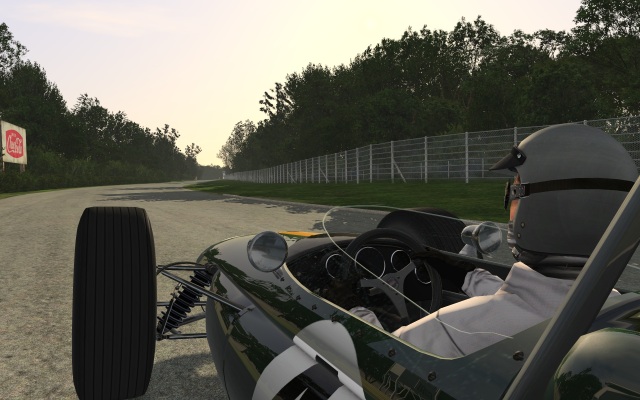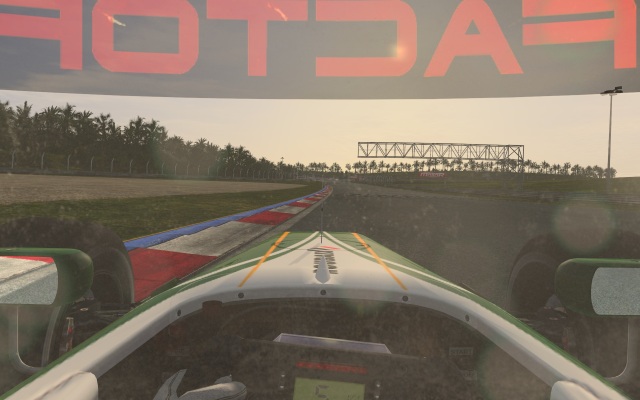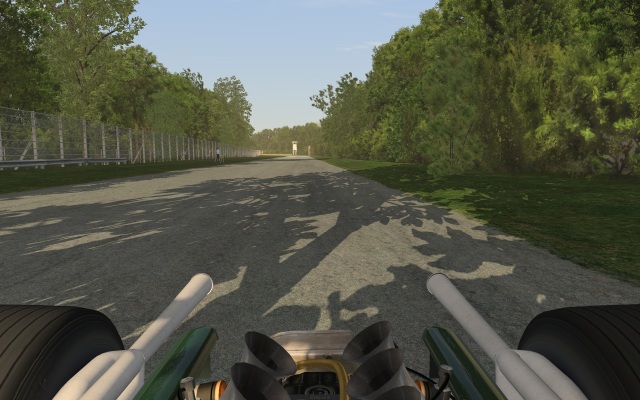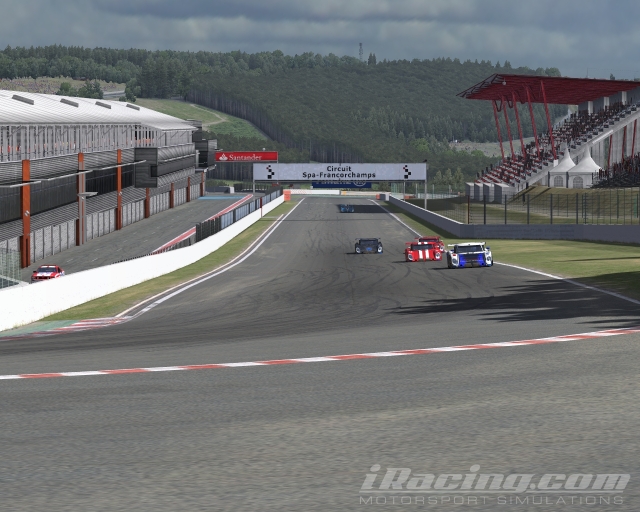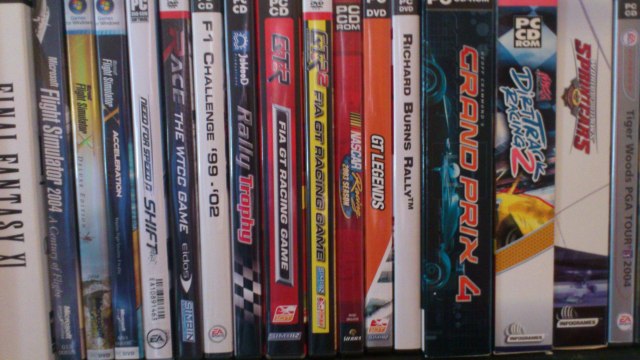“It’s race six of the 1994 season, Mika and I have worked so hard on development to bring the McLaren-Peugeot into contention for wins, though I seem to be the only one to have taken any wins so far. The opening race at Sao Paolo was mine, with Jean Alesi taking second I got a leap on the championship battle that was to emerge with Michael Schumacher in his Benetton-Ford B194. He won at Aida, then Imola, where I got third behind Hill. Monaco was all about the two of us but I emerged as the victor. Sadly, in Barcelona Michael had it all his own way.
Now we’re in Montreal. Michael stuck it on pole, with me on the front row beside him. We got away well and now I’m tracking behind him as we approach the first pit window. Hill in third is over twelve seconds back and battling hard with Mika and his team mate David Coulthard. My tyres are starting to struggle and Michael has a clear edge in the braking areas, I don’t think I can beat him here, unless I can work the pit stops to my advantage, he’s pushing hard as we come up to the pit window. We chop under the bridge into the braking area for the turn eight chicane and I notice Michael has gone deep, I brake at my normal point, where I have the last twenty laps, he locks his inside front hard and pushes wide, over the chicane. I take the gap, I see Schumacher’s blue and green Benetton bouncing on the grass to my left, and then in my left mirror, sideways, rejoining the track wildly as I power down to the hairpin. I didn’t expect that, a grin spreads across my face. Still, there’s a long way to go in this one.”
Wait a minute, that doesn’t sound like the 1994 Formula One season. The season Senna started as favourite until that tragic weekend in May, the season that McLaren’s move to Peugeot engines began a dry spell that would last till 1997, the season that Schumacher took second place in Barcelona, despite his Benetton being stuck in fifth gear.
That’s because it was my 1994 season, as it played out in Geoff Crammond’s seminal simulator “Grand Prix 2“. Such was the depth of this sim, the atmosphere, the attention to detail, that one could sculpt a story around it, build a fiction that could encapsulate a simracing mad teenager’s mind so much that focus on that next practice session took precedence over any suggestion of pesky homework.
It wasn’t just Grand Prix 2 (GP2), of course, I had lived through four full seasons in its predecessor, as well as two full Indycar seasons in Papyrus’ “Indycar Racing” the sim that allowed simracing legend David Kaemmer take the fight to Crammond, in which similar stories could be pieced together from races. I still remember a white knuckle lap around Laguna Seca to steal pole from Bobby Rahal’s Lola after an hour-long tussle for the spot. I remember throwing a 32 second lead into the wall at the Vancouver street race due to a lapse in concentration and my parents being baffled at my inexplicable rage through dinner.
This depth allowed a racing sim to take over all of one’s free gaming time, which when I was fourteen was quite a lot, and it was in these sims that the foundation of what I now get to call a hobby was born.
Back in these days online racing was just a dream, and once or twice I hooked a 14.4bps modem up to a friend to manage a two player punt around in GP2 and speculated on a future where one could race random people the world over on the great race tracks of the world. Back then conceptions of online racing never got in the way of good, offline racing, against AI that, in some cases, was believable and immersive. I effectively decided I disliked Paul Tracy due to the way Papyrus made his on-track persona, and I respected and loathed Schumacher for his devastating race pace that allowed him to beat me on more than one occasion. At season’s end, I would concoct a plot for the driver market, and move drivers between teams using mod tools to make sure the right helmets were in the right cars, and even contended a season in a midfield Tyrrell. The headlines roared out about my mistake, how would he get out of this contract in an uncompetitive car?
It was a time when every sim offered this kind of immersion. You could compete in a full season racing the guys you see on TV in Formula One, Indycar, NASCAR, by 1997 Codemasters entered the fray with TOCA Touring cars featuring the (then vibrant) BTCC series. There were many directions for one’s imagination to race, and then came Grand Prix Legends (GPL), and the immersion stepped up another notch.
Racing Jim Clark, Graham Hill, Jacky Ickx, Lorenzo Bandini, in a sim? In 1998 I had only a passing knowledge of Formula One in 1967, now I am a noted expert on the subject! GPL gave us accurately reproduced tracks of the era, along with cars that sounded like sheer heaven, and sometimes drove like sheer hell, accurate race program covers, an interface with that aged look and feel that we normally only got with World War two flight sims. A full season in GPL took its toll, and my insistence on driving a Ferrari also meant that the best I could hope would be to beat Bandini over the season. A move to Lotus for my next season saw me repeatedly crushed by the genius of Clark in computer form, over and over. Never has a robotic version of a world champion garnered so much grudging respect as had Jimmy Clark back in the winter of 1999. But then came VROC, and everything changed.
When the clouds of reverie disperse, we find ourselves in 2012, only seven years before Bladerunner will take place, where cars will fly, and androids may or may not dream of electric sheep; the simracing arena has changed, and online racing is the focus of every sim out there that has any claim to the name. Major licences such as Formula One and NASCAR are given offline blasts in games that any serious simulation enthusiast would regard as “arcade” and a multitude of online only simulators own the serious simmer’s time, with examples of cars from the aforementioned series available as a “weapon of choice.”
Forums are naturally alight with competitive gripes, with lengthy discussions on better tyre physics or stronger realism, and in a sense, immersion. But is some of that immersion lacking from the very nature of the sim? Can the immersion of racing against a field of drivers you see racing on TV, week-in, week-out be comparable to racing against a series of names you’ve never heard of? Is racing Jimmy Smith the same as racing Jimmy Clark? I think not.
In recent times, the issue that the offline sim has had, is poor AI. Games such as GTR2, GT Legends, the P&G add-on for GTR2 (It’s too close to being a completely new game to be really called a mod) and a number of others suffer from using ISI AI code that was seemingly thrown in as an afterthought to a sim that would be focussed on online play. With AI that can do curious things, like line up and park behind a car that has spun, or turn in mercilessly on a human player that is alongside it into a turn, how can you be immersed? How can you run a full season against AI that does things that can only be classified as “daft as a brush?” You can’t, and so the online packages get adopted.
But for many, online racing is not satisfying. At times you can get onto a server and spend hours just trying to get within a second or two of the incumbent drivers. You could race for years without having a shot at victory, car choice gets limited to the fastest car or nothing, and when the race comes to an end, unless you race in a league there is little point to it, no championship points, no long-term campaign. Even if you win the race any elation you have is not shared, there is no cinematic cut-scene with a champagne bottle cork launching into the air, nothing but back to a menu, and back to staid, real life.
Of course, this is the thing about online racing, it is real life. You, and all the other people in the race are really in there, doing this race, making it happen. It’s a great, great thing, but do we not sometimes like to play with simulators to explore our imagination? Most Falcon 4 players don’t want to really be in a theatre of war, but they love their sim because they get to explore the depths of their imagination to see what it could be like. When a Flight Simulator X player completes some insane challenge to land a Sea King on an Aircraft Carrier in extremely turbulent weather, they feel a sense of achievement, where the real life Sea King pilot would much prefer a nice, calm, sunny day.
Simulators of all forms, on the most part, give us the chance to drive vehicles we wouldn’t get the chance to drive in real life, and they can put us into situations that are tough. When we race online it’s sometimes too close to the bone, too real, and emotions run high, who needs the stress? We’re supposed to be doing this for fun.
There was a long period in video gaming when many a game would offer both an online and an offline component, appealing to both ends of the market. I feel, in the modern era, when we look at the relatively small niche of simracing that encapsulates anything that can seriously be called a simulator, that offline play is neglected. Is there no call for a serious simulator that takes on the IZOD Indycar series anymore, for instance? Whilst I understand that the global popularity of series such as Formula One or NASCAR have such broad appeal that a game has to be playable by a wide audience, there are many series out there that could be developed into a solid, deep and time consuming offline sim: DTM, GP2, GP3, Grand-Am, WEC, ALMS, even the Lotus Cup UK!
Throwing a Lotus 49 into an online sim doesn’t give the offline player the chance to be 1967 Formula One World Champion any more than chucking a Porsche 911 GT3 in would let you virtually battle René Rast for the Porsche Supercup title, and offline racing, indulging in our imaginations, is where this whole business started from.
With some good AI, attention to detail and realism, any racing series could be a great challenge for the offline simracer. It gives the player the chance to play the time of day that suits them, to save their game and come back to it if their five year old kid piles into the room mid race, to enjoy poring over tyre management (Crammond’s GP series enforced F1’s tyre restriction rules of the era) in their own time, and to be able to adjust the performance slider to fit in with their pace to make sure that they get the kind of enjoyment from their driving simulation that they want.
When I compare that to the Lion’s den of online racing, I have to assume that someone might want to give it a go.




